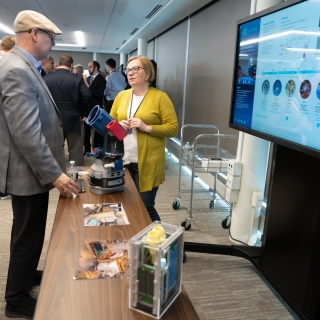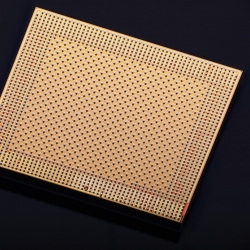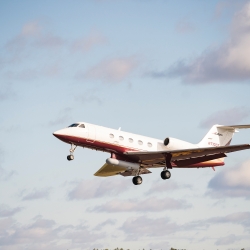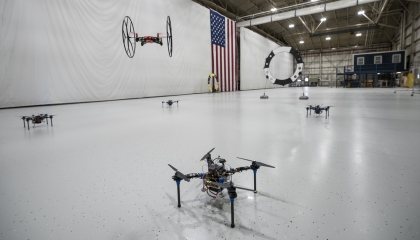

Tactical Edge Communications
Researchers in our group develop new algorithms, architectures, and hardware for radio frequency (RF) systems used for wireless communications, geolocation, and surveillance capabilities. We use our expertise in space-time adaptive processing to develop antijam and low-probability-of-detection communications for military operations in terrestrial, airborne, and maritime environments. Recent research areas have included RF hardware implementation and signal detection, localization, and classification in environments with overcrowded airwaves and frequency conflicts.
Featured Projects

embedded computing
Advanced ASIC System on Chip for CLASS
A power-efficient application-specific integrated circuit system on chip that performs up to 2 trillion computations per second has potential for use in mobile communication systems.

networking
Prototype Airborne Contested Environment Communication Relay (PACECR)
A system enables aircraft to replace a satellite communications network.
Latest News
Laboratory Stories
I enjoy the mathematical depth of the signal processing field and leveraging that depth into more efficiently and effectively functioning communication systems.
Henry Romero
Mathematical Engineer
Communication Systems
Tactical Edge Communications
I enjoy the mix of being hands on with day-to-day operations and of thinking longer term and helping communicate to sponsors what we are doing and why.
Joshua Van Hook
Engineer
Communication Systems
Tactical Edge Communications
It's good to know how far, how fast, and how reliably we can talk to someone in a tactical setting.
Joseph Rottner
Wireless Software Engineer
Communication Systems
Tactical Edge Communications
The camaraderie leading up to a demonstration is one of the best aspects of my job.
Tejash Patel
Integration Engineer
Communication Systems
Tactical Edge Communications
Advancing Our Research
Events
May
19
-
20
Lincoln Laboratory Communications Workshop (LLCW) 2026
MIT Lincoln Laboratory, Lexington, Massachusetts
Featured Publications
Covariance estimation with scanning arrays: FY23 RF Systems Technical Investment Program
Dec 21
MIT Lincoln Laboratory Report TIP-194
Robust network protocols for large swarms of small UAVs
Mar 5
2022 IEEE Aeropsace Conf., AERO 2022, 18 p.
Detecting pathogen exposure during the non-symptomatic incubation period using physiological data: proof of concept in non-human primates
Sep 3
Front Physiol., Vol. 12, September 2021, Article 691074.





